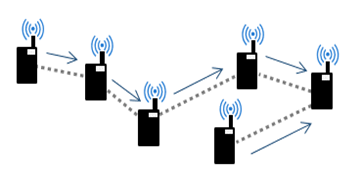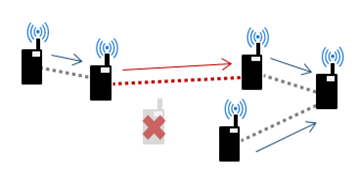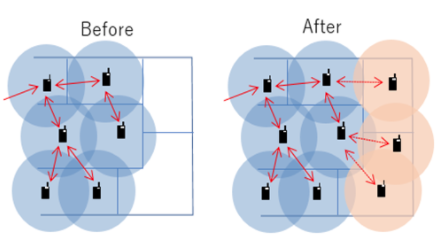
For a long time, commercial lighting systems have been committed to equipping facility managers with industry-leading lighting control technologies. This unwavering commitment aims to significantly reduce energy consumption through innovative control systems, actively responding to green environmental concepts and economic efficiency demands.
Intelligent lighting refers to a distributed wireless telemetry, remote control, and remote communication control system composed of technologies such as computer, wireless communication data transmission, spread spectrum power line carrier communication technology, intelligent information processing, and energy-saving electrical control, to achieve intelligent control of lighting devices. It features functions such as light intensity adjustment, soft start of lights, timing control, and scene setting.
Compared to traditional lighting, intelligent lighting can achieve safety, energy saving, comfort, and efficiency, thus having good development prospects in residential, office, commercial, and public facility areas. For example, as remote work becomes increasingly popular, it is becoming more common to only want to turn on the lights at one’s own desk in the office; in store lighting, subtle dimming is sometimes needed to match the display of certain products or the atmosphere of the sales area. Through wireless networks, we can easily control the lights in offices and stores.
The wireless module from Kagafei Electronics is widely used for wireless control of LED lighting by supporting proprietary mesh network protocols.

Concerns when implementing network control: worries about large wiring jobs
High barriers to establishing a network——In terms of lighting, fluorescent lights in buildings and stores have already been wired for signal lines, and separate control requires large-scale wiring work again. In many cases, such as shops and offices in tenant buildings, construction work is difficult to carry out, and wiring construction increases the threshold for network construction.
Pairing with wireless modules: building a large control network without wiring work——By integrating wireless modules into lighting devices, you can freely adjust the brightness of each lighting unit or area. Since it uses its own “mesh network technology”, communication is established between adjacent lighting (nodes). Moreover, the nodes automatically determine the communication path, minimizing communication time. Unlike wired communication systems, wireless communication does not require constructing signal line layouts. You can wirelessly control lighting through a smartphone or tablet, and control up to 1,000 lights from a remote location with intuitive operations.

Simple Wireless IoT: Features of Mesh Network Compatible Wireless Modules
By using wireless mesh networking capabilities, centralized control can be achieved even in large offices and factories with obstacles. Kagafei Electronics has a series of modules that use mesh network protocols, expanding the scope of network design. The “mesh link protocol” transmits signals via relay, overcoming walls and obstacles, and enabling individual control of thousands of lights and switches.

Each node independently searches for connection partners and relays received data. Nodes in the network can also operate with low power.

Automatic rerouting function
Since each module automatically selects the shortest path, fast and stable communication can be achieved. Even if a device’s battery on the path runs out or a connection fails, it will immediately search for another path. Since another route is automatically constructed without manual resetting, communication loss is minimized.

The frequency band of the wireless module is 2.4GHz, a common and widely used frequency. However, it has a channel hopping feature, communicating on the best channel each time, avoiding interference from other radio communications.

Automatic communication path repair: freely add/delete nodes
Automatically establish and restore networks without complex setups—— If you want to add new nodes or delete nodes to expand the entire network, no special setup is required. If a node is deleted, another route will automatically search and repair, allowing easy changes to the network configuration. To view the entire network configuration, you can perform network simulation to hypothesize and visualize the behavior during system operation.


Network Simulation: Initial Diagram of System Operation
Simulate system operation on a computer before placing the actual machine—— Freely arrange nodes on the simulator to simulate the motion during actual system operation. It can not only predict the assumed communication routes and movements when adding nodes but also forecast the battery life of each node. By checking for any deviations in the operational image before installing the actual machines, the gaps during the actual operation process can be minimized.
About Kagafei Electronics (Shanghai) Co., Ltd.
Kagafei Electronics (Shanghai) Co., Ltd. was originally Fujitsu Electronics, and its business was integrated into the Kagafei Group in December 2020, aiming to provide customers with better quality products and services. Branches are established in Shenzhen, Dalian, and other places, responsible for coordinating Kagafei Electronics’ sales business in China. The main sales products of Kagafei Electronics (Shanghai) Co., Ltd. include Custom SoCs (ASICs), foundry services, dedicated standard products (ASSPs), ferroelectric random access memory, relays, GaN (gallium nitride), MCUs, and power devices, which are provided to customers in the form of independent products and supporting solutions, widely used in high-performance optical communication network equipment, handheld mobile terminals, imaging devices, automotive, industrial control, home appliances, wearable devices, medical electronics, electric meters, security, and other fields. For more details, please visit:https://www.kagafei.com/cn.
·END·

Scan to Follow Us